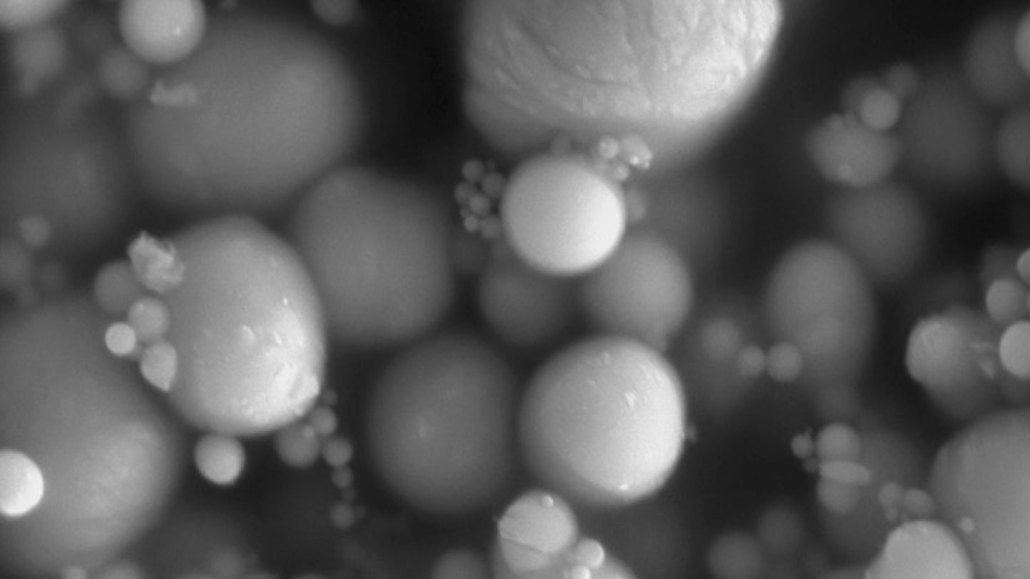
Exposure to ultrasound creates nanoscopic balls nestled among larger microspheres of liquid metal (shown in this scanning electron microscope image) in a new approach to stretchy wiring.
Wonbeom Lee/Korea Advanced Institute of Science and Technology

Exposure to ultrasound creates nanoscopic balls nestled among larger microspheres of liquid metal (shown in this scanning electron microscope image) in a new approach to stretchy wiring.
Wonbeom Lee/Korea Advanced Institute of Science and Technology